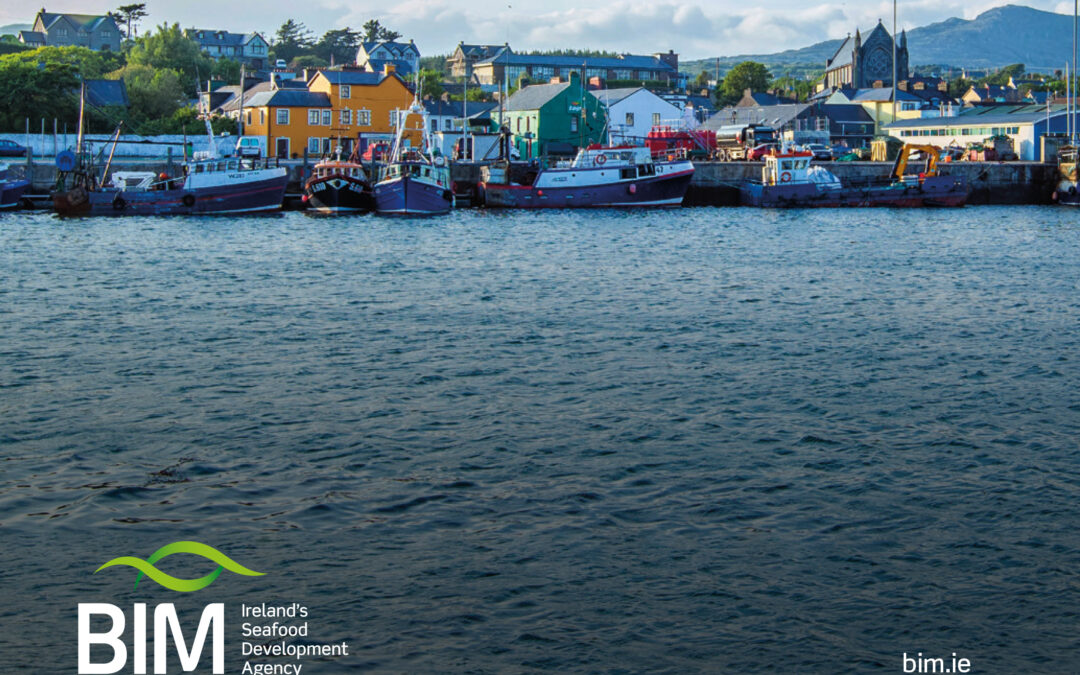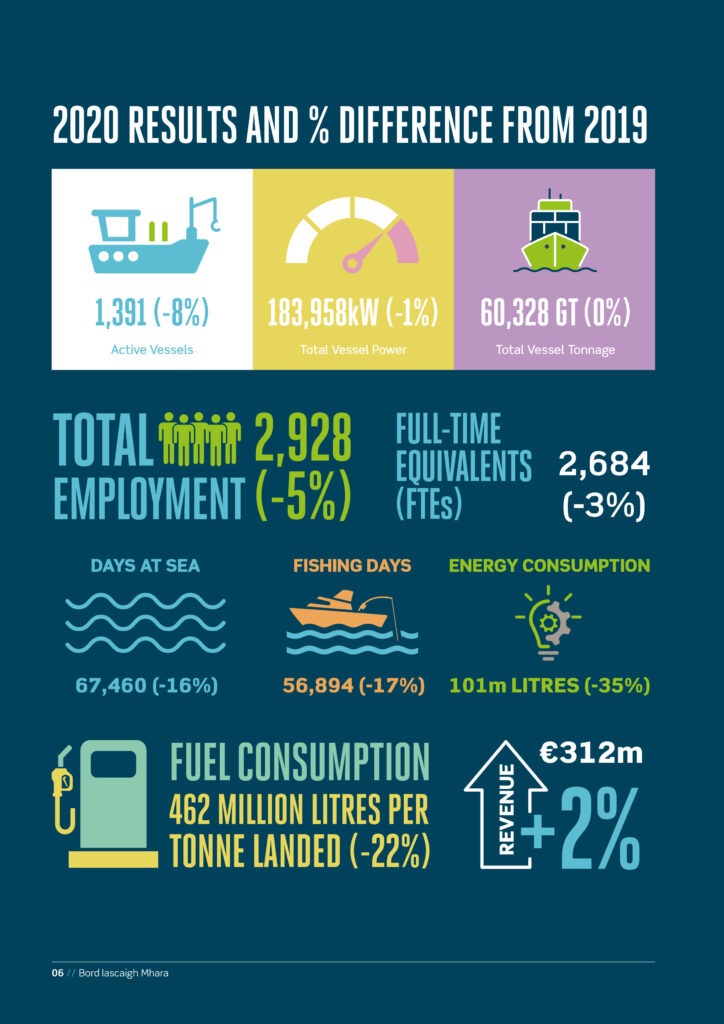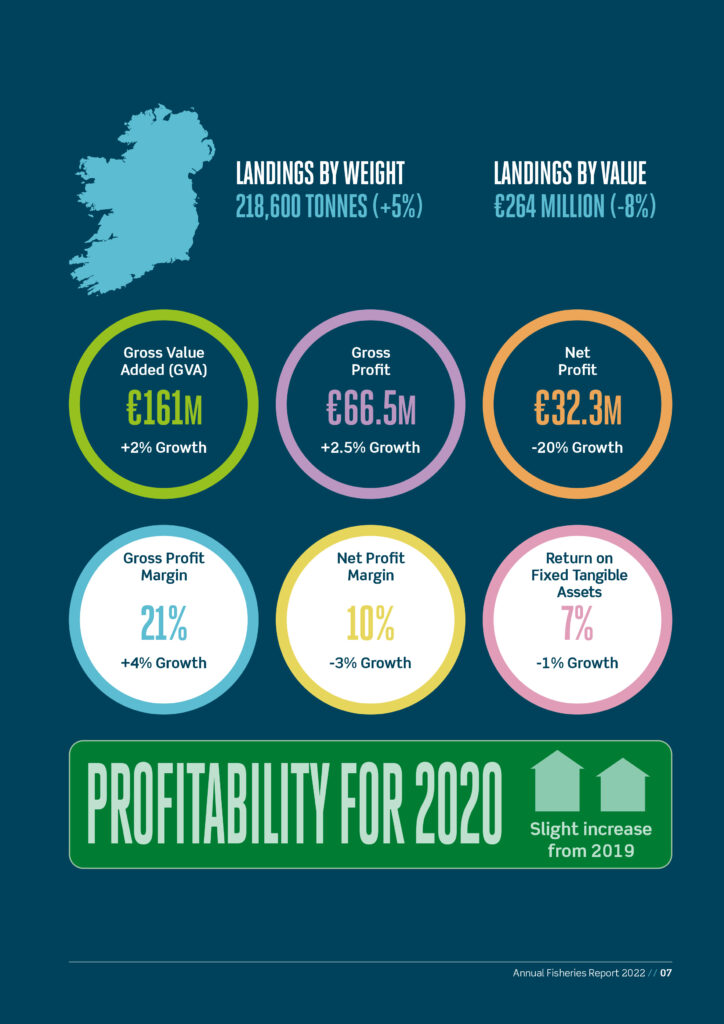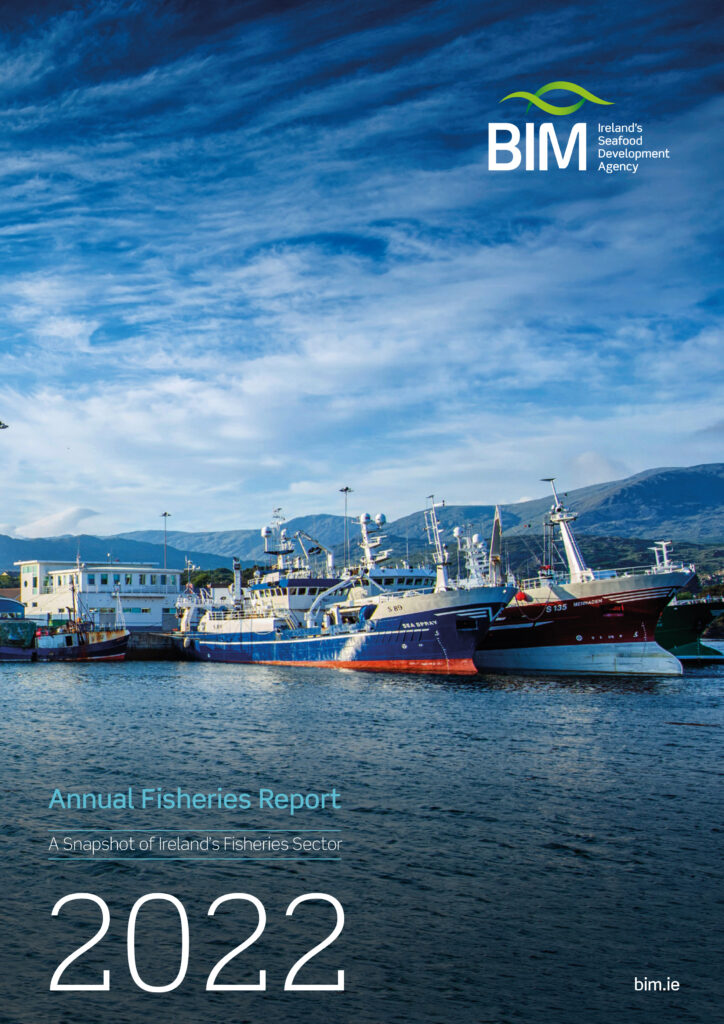BIM’s National Seafood Survey provides insights into the status of Ireland’s catching sector on an annual basis. It is an integral part of fisheries’ performance data reporting to the EU. Based on the most recent survey returns the Annual Fisheries Report 2022: A Snapshot of Ireland’s Fisheries Sector, examines the economic performance of the national fleet and its multiple segments. It also details the social demographics of people employed in the sector and the current challenges impacting the industry.
The report provides insights and trends for the financial and operational performance of the Irish fishing fleet based on economic data of 2020 operations. It also provides an overview of key forces impacting the economic performance of the Irish fleet from 2020- 2022 based on industry feedback. Some of the impacts referenced in the report include Covid-19, Brexit, inflation, and the Russian invasion of Ukraine. Future projections for economic performance are included in the closing section.
Creating an accurate picture of the industry relies on a strong response rate, and consistent support and goodwill from skippers and vessel owners to provide economic and operational data on an annual basis. The results of the survey help both industry and policy makers to understand the challenges and opportunities they face, as well as the impact of fisheries management measures such as Total Allowable Catch (TAC) and quota allocation.
The survey returns also form the basis for the justification of national and EU grant aid programmes, focused on supporting the industry and coastal communities. The next survey for 2021 will open in October 2022 and end on 31 January 2023.
The report is available here.
BIM will be hosting National Seafood Survey information meetings with vessel owners at various ports from October onwards to discuss the finding of the Annual Fisheries report 2022, the importance of returning the annual survey and how to register and complete the online National Seafood Survey for 2022.
If you would like to register to attend one of the meetings listed below, please email Dr. Sarah Perry, National Seafood Survey Coordinator, for further details: DCFData@bim.ie
Additional meetings are scheduled with the NIFF and RIFFs and further meetings may be organised at more locations at a later date.
Killybegs
- KFO Board Room, October 11th, 2022, at 2pm
Greencastle
- BIM National Fisheries College, October 12th, 2022, at 6.30pm
Castletownbere
- BIM National Fisheries College, October 18th, 2022, at 6.00pm
Dingle
- Harbour Masters Office, October 19th, 2022, at 2.30pm
The Annual Fisheries report has the following key findings for 2020:
- Profitability of the Irish fleet has increased since 2019. Revenue increased by 2%, amounting to €312 million; gross value added (GVA) €161 million (+6%), gross profit €65 million (+24%) and net profit decreased to €32 million (-20%) due in part to Covid-19.
- The Irish fishing fleet spent 77,460 days at sea, of which 84% were fishing days representing a decrease of 16% and 17% respectively from 2019.
- Energy consumption decreased by 35% over the same period reflecting this decrease in effort.
- The fleet landed over 218,600 tonnes valued at €312 million, an increase of 5% from 2019 in live weight and an increase of 2% in landed value (€306.5 million). In 2021, the fleet landed 233,000 tonnes, an increase of 7% from 2020.
- Overall, the cost structure of the fleet has remained stable with a slight increase in all costs except non-variable costs (e.g., insurance, loan interest). Operating costs totalled €255 million, a slight increase of 1% from 2019 with energy costs increased by approximately 10%. When capital costs are included, the total cost of operating the national fleet rose by 4% since 2019 to €278.5 million.
- Direct employment generated by the sector was estimated at 2,928 jobs
corresponding to 2,684 full-time equivalents (FTEs). - Based on feedback from industry, the impact of the Russian invasion of the Ukraine on inflation and rising fuel costs was the main driving force influencing the economic performance of the Irish fleet in 2022. In 2020, average fuel costs per litre were €0.42 whereas average fuels costs per litre in mid-2022 stood at €0.90 representing a 114% increase in cost and the current reported costs of €1.20 per litre represents a 18% increase since 2020.
Future Projections
- In terms of the outlook for economic performance for 2021-2022, preliminary data point to a decrease in revenue and profitability for the Irish fleet. For 2021, the data indicates an increase in landings by weight from 2020 (+6%) and a decrease in value of landings (-7.5%) due to decreasing fish prices and changes in quota allocation. Gross profit for 2021 is projected to decrease significantly (-58%) to €27.6 million combined with a decreasing net profit (-75%) to €8.1 million.
- Preliminary data for 2022 compared to 2021 indicate a decrease in landings by
weight (-17%), an increase in value of landings (+5%) and a decrease in gross profit (-12%) to €24.5 million. It is anticipated that the Brexit tie-up schemes will mitigate these projected outcomes and allow the industry to absorb the impacts of rising fuel costs for some segments of the fleet and the reduced access to fishing quota as a result of Brexit. In the long-term, decommissioning will help to bring fleet capacity back in balance with available quotas and improve the profitability for vessels remaining in the Irish fleet.





Recent Comments